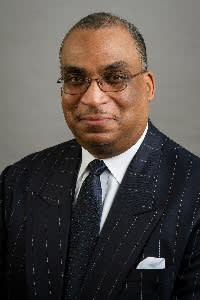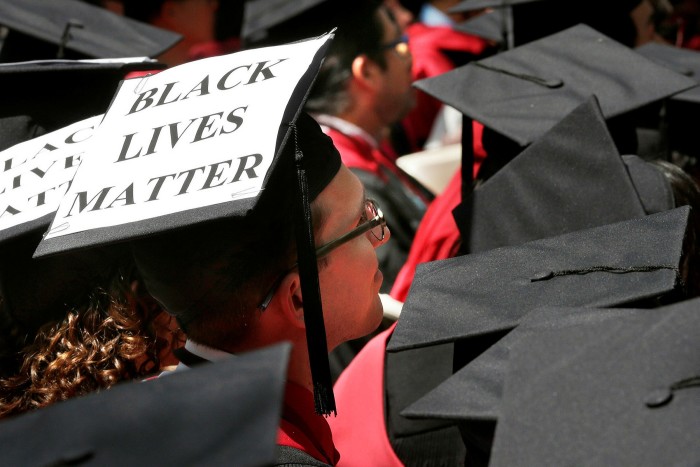Slow progress on race hampers business school diversity push
Steven Rogers provides a single nuance to his scathing critique of initiatives by Harvard Business College and others to stage up their schooling of black administrators in the US: “No faculty was superior [than Harvard] and all of them were awful.”
Rogers quit the Harvard college as a senior lecturer in finance in 2019, after feeling “heavy disappointment” with the school’s slow development on diversity, and has given that taught his possess black company leadership and entrepreneurship programs throughout the US.
He would like to see far more outreach and assistance programmes at company universities to assistance recruit and retain college students and workers larger creation and use of obligatory situation experiments with black protagonists and — far more radically — direct expenditure by university endowments in black-owned organizations.

His sentiments replicate broader frustrations by under-represented teams trying to get entry to company education and learning: although diversity is seen as the two ethically vital and pragmatically important for corporate good results, the barriers stay sizeable to company universities stepping up their response.
Business universities have produced development in recruiting girls college and college students — even if most stay far from attaining gender parity. In the previous decade, the leading a hundred FT ranked world-wide MBA programmes have increased the proportion of girls college students from 30 for every cent to 37 for every cent on normal, and amid college from 24 for every cent to 29 for every cent.
Many universities have refreshed their curricula in line with switching societal anticipations, with a larger target on topics such as sustainability. On the other hand, the report stays patchy on addressing imbalances amid typically excluded teams, such as black college students and college.
Sparked in component by the Black Life Make a difference motion, Harvard Business College very last September disclosed a racial equity action system. It has still to share precise targets, but is planning to appoint a chief diversity and inclusion officer along with thirteen new college, of whom four identify as black or African-American.
The faculty says each individual program in its essential curriculum will use at the very least a single of the 60 training situation experiments it has that includes a black protagonist, and it is acquiring a technique to monitor new kinds under improvement. It has also introduced an elective on scaling minority organizations, and programs to extend procurement from black-owned organizations.
Harvard is not on your own. “We need to have to function on the diversity of the student overall body and, at the time they come in, how to make sure that we have an inclusive environment for them,” says Costis Maglaras, dean of Columbia Business College. “We would like our college, scenarios, guest speakers and role models to match the demographic of our student overall body.”
But reform is not very simple. A obstacle for company universities is defining under-represented teams for which to make improvements to entry. For Rogers, writer of A Letter to My White Pals and Colleagues, there is very little doubt in excess of those people from whom historic injustices are greatest.

“As you go from place to place, the question is no matter whether there is a team of people today that have historically been discriminated from by way of colonialism or enslavement,” he says. “In each individual a single, blacks have expert anti-black racism.”
Piet Naudé, dean of the College of Stellenbosch Business College, says his priority is larger inclusion of South Africa’s black citizens after a long time of discrimination under the apartheid regime. “It is a question of switching institutional tradition away from the default white, patriarchal place,” he says.
Joseph Milner, vice-dean for MBA programmes at the Rotman College of Management at the College of Toronto, has broadened this target to incorporate “people of colour” — such as black Canadians and African-Caribbeans, but also Canada’s indigenous populations, such as the To start with Nations.
He has overseen new scholarships and the appointment of “executives in residence” with various backgrounds to share their experiences and offer mentoring. But he stresses the large legacy of the previous: “First Nations have been component of the Canadian colonial working experience, and the College of Toronto by itself is seen as component of the colonial venture. There’s a historical past,” he says.
Inquiries to world-wide company universities by the FT discovered other initiatives. Chinese establishments highlighted representation amid those people ethnic teams in the place beyond the bulk Han populace. In India, emphasis is placed on entry to the cheapest Hindu castes.
In the United kingdom, a single target is on social mobility, trying to get to appeal to those people from poorer backgrounds. But these actions are generally developed to make improvements to possibilities for far more marginalised British citizens to entry undergraduate education and learning, somewhat than fostering diversity and affordability on the postgraduate and qualified schooling programs that normally cost increased fees.
In France, ESCP Business College has launched Chances Augmentées, a programme aimed at encouraging what it calls a far more various “social and geographical” assortment of candidates for its company entrance examination.
In other places, some universities highlight policies to identify and make improvements to representation amid military veterans, LGBTQ college students, those people from religious minorities, the physically disabled or those people who are neurodiverse. A single faculty cited “extreme aged age” as an under-represented team on its advisory council.
A 2nd issue is measurement by itself. Some European company universities argue that a regard for privateness, increased by the modern GDPR legislation, boundaries their means to obtain and use checking data. France does not obtain formal figures by race or ethnicity, arguing that such data could make discrimination and that all those people with citizenship are equivalent under the legislation, irrespective of background.
There are also ambiguities in how diverse teams are categorised. Business universities have diversified their worldwide intakes, pleasing to college students from other nations to make a larger mix in the classroom. But in the procedure, it gets to be far more complex to assess ethnic background and how far deprived teams are getting efficiently specific to promote social mobility.
“It’s virtually difficult to decide on apart,” says John Colley, affiliate dean at Warwick Business College. “It is dependent on what someone chooses to call themselves.” He details out that quite a few of his institution’s intake are citizens of Commonwealth nations, but longtime United kingdom inhabitants.
Actions could be slow and complex to measure, but college students such as Toni Martin position to development. She says she feels self-confident researching her EMBA at MIT’s Sloan College of Management, while she is just a single of two black girls on her program. “True diversity and inclusion is making area for diverse voices to be heard . . . to feel snug plenty of in your possess pores and skin to add to a discussion when you really do not feel it will be held from you.”






